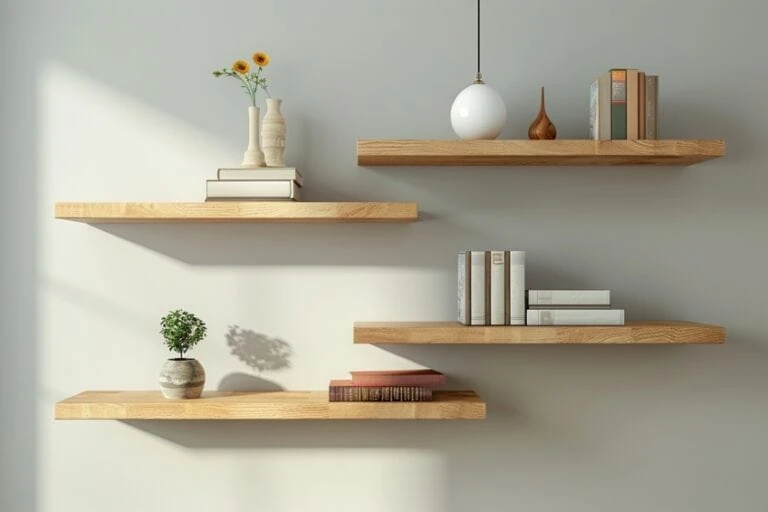Standard Curtain Lengths – Best Dimensions for Drapes
This post may contain affiliate links. We may earn a small commission from purchases made through them, at no additional cost to you.
For a long time, curtains have been the most favorable of window treatments. Curtains are timeless, especially when taken into consideration that they have been around since the 15th century and are very popular to this day. Curtains have a way of placing that finishing touch on an interior and pulling the entire space together. They soften everything and, depending on the length and color, have a huge impact on the overall mood of a space.
Contents
Standard Curtain Lengths
When going to the store, you will find that there are standard curtain lengths readily available that are most likely to suit your needs. Keep the following standard curtain lengths in mind when measuring from your floor to your ceiling:
| Short | Medium-Length | Long |
| 63 inches | 84 inches | 108 inches |
| 84 inches | 96 inches | 120 inches |

If, for example, the measured height from the floor to your curtain rod turns out to be 94 inches, you will have to opt for the 96-inch standard length curtains. Always round up – you can always have the curtains altered to be shorter.
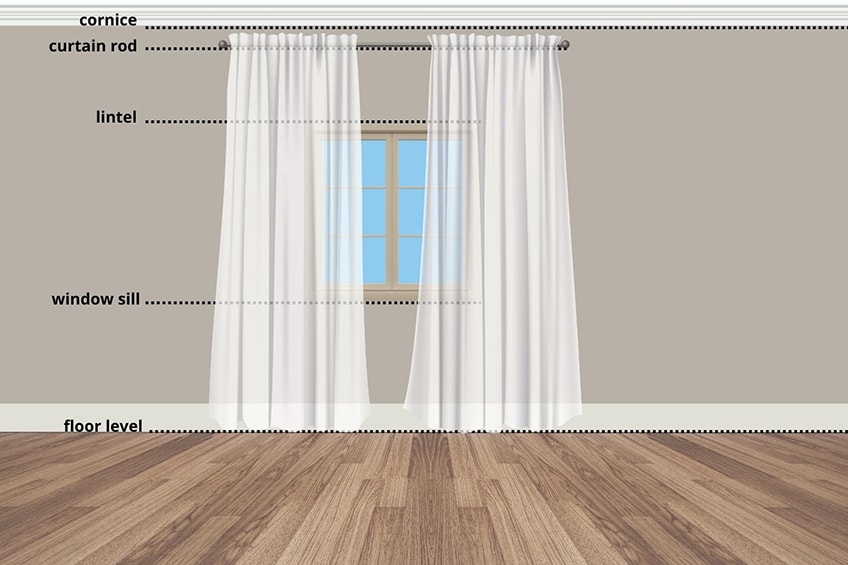
Note: There are a lot of different width sizes, but 45 inches is the most common.
Types of Curtain Lengths
Depending on the type of room and use of the space, you might decide on very short curtains like café curtains or dramatic puddle curtains that pool on the floor. Shorter variations of curtains are considered outdated by designers, but it is still important to take note of and can be useful in certain instances where you want to soften a space or create privacy without blocking out all of the natural lighting.

Sill-Length Curtains
The bottom seam of sill-length curtains stops just above the windowsill. Although not currently very popular in the world of interior design, they still have a place if the function and style of the interior allow for it. If, for example, you have a window directly above an oil heater that sits against a wall, full-length curtains are a no-go, for obvious reasons. The most practical solution would be to install blinds in this case, but blinds can sometimes visually do more harm than good to the overall look and feel of a space. If you want to achieve the soft and flowy effect of curtains, then sill-length curtains are your best option in this scenario. These shorter-length curtains work especially well within a French cottage aesthetic.

Apron-Length Curtains
Apron-length curtains stop about an inch below the bottom of the windowsill. Apron curtains are similar to sill curtains, the only difference being that they are a bit longer. These reach below the windowsill, and in turn, create more visual height in the space. These curtains should also only be used when something is preventing you from using full-length curtains, as they tend to visually break a wall up in sections, making the overall space look much smaller.
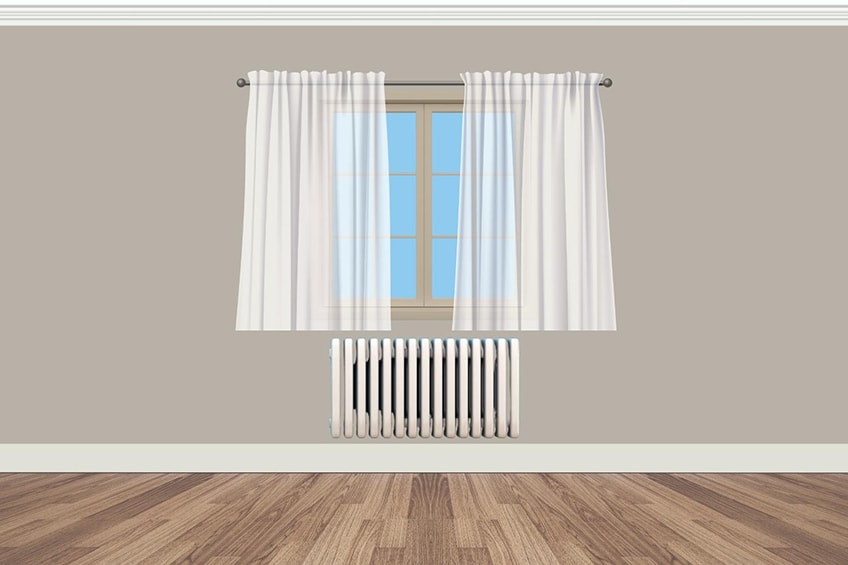
Floor-Length Curtains
Floor-length curtains, also known as kiss-length curtains, graze the floor finish by sitting approximately half an inch above the floor. This curtain length is by far the most popular, and for good reason. Floor-length curtains are timeless and stylish and they have the ability to add visual height to a room. They are also a popular choice for blackout curtains. The curtain mustn’t touch the floor, however, as this will become a dust trap and create bumps in the length of the curtains, as it will not hang perfectly straight.
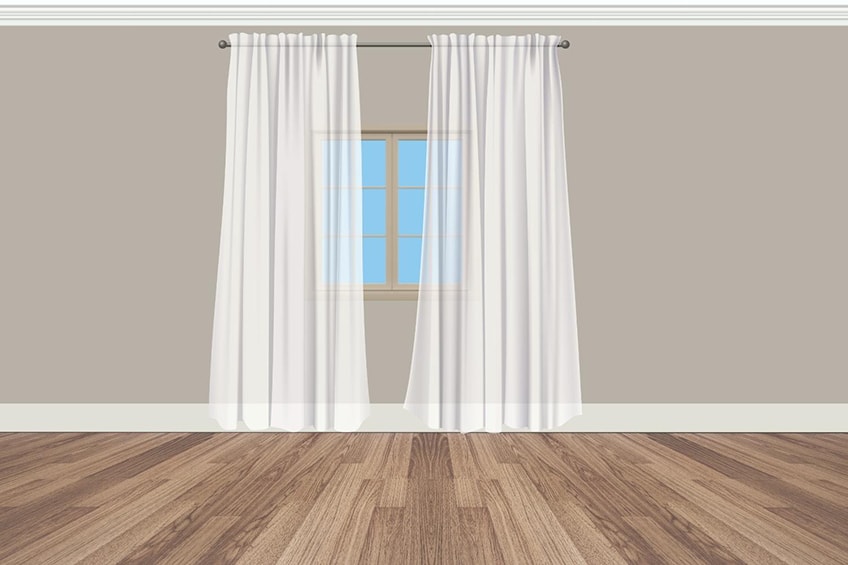
Trouser-Length Curtains
Curtains that are two inches longer than the height from the floor to the curtain rod are called trouser-length curtains. These curtains tend to look a bit more casual and effortless. Of course, hanging on the floor, these curtains should be used in rooms or areas where there is less foot traffic.
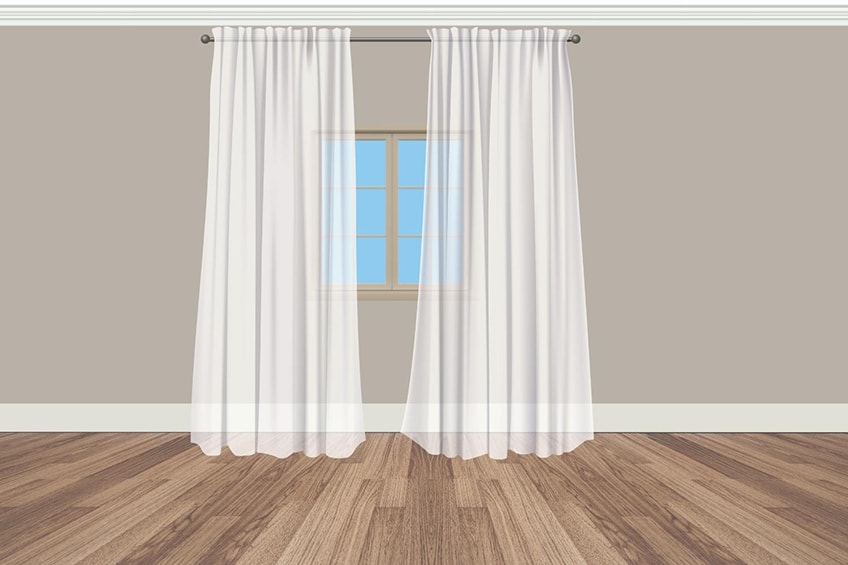
Puddle-Length Curtains
Puddle-length curtains are a good six to ten inches longer than the length from the floor to the curtain rod. Although not the most practical of lengths, these overly long curtains provide a very dramatic and formal aesthetic. It goes without saying that these lengthy curtains are a no-go in a space with a lot of foot traffic, or where kids or pets will spend their time. It is important to note that these curtains only work well in rooms where there are already very tall windows. When installed in rooms with low ceilings, it will result in an unfinished and cluttered look. This curtain-length option looks great in rooms with a very formal aesthetic. To create the pooling effect, it is also important that very light and sheer fabric is used for these types of curtains.
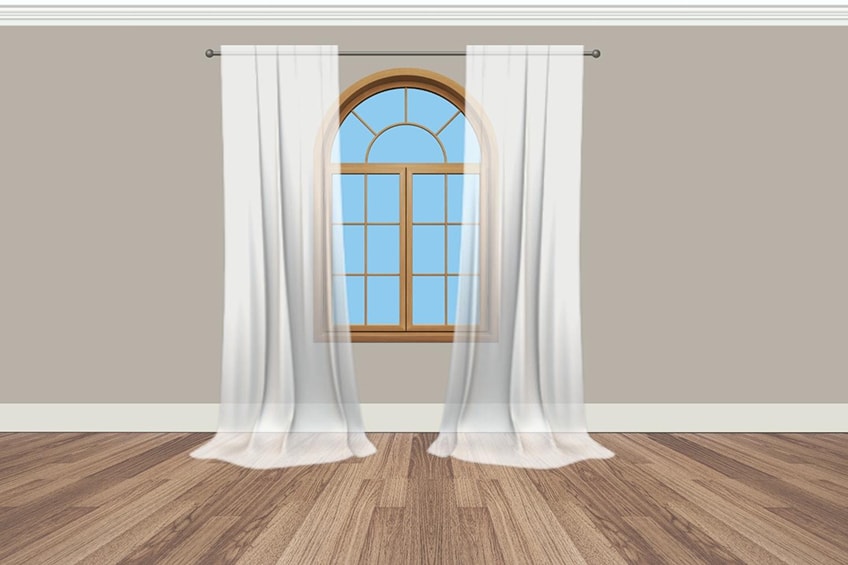
Note: Puddle-length curtains are not practical at all, as they are very difficult to open and close. Only consider these for decorative purposes where you won’t need to physically open and close them daily.
Tier-Length Curtains
Tier-length curtains are available in 24 inches, 36 inches, and 46 inches. These are standard lengths, but they can certainly be altered or customized depending on the window size. Tier curtains are also known as privacy tiers, as they only cover the bottom of the window for privacy purposes while letting natural light in from above. There is no set rule for the bottom seam of tier-length curtains, as they can either stop above or below the windowsill. Letting it hang over the windowsill, or as far as possible over, does however, give more of a seamless effect, especially when sheer fabrics are used. These curtains are very popular in kitchens with large windows, usually above countertops.

Valance-Length Curtains
The direct opposite of tier curtains, valance curtains only cover the top half of the window. These curtain lengths are only applicable where no privacy is needed. They are used more for decorative purposes but are also a solution to covering the headrails of blinds/shades. Standard valance curtain lengths are three to five inches long.
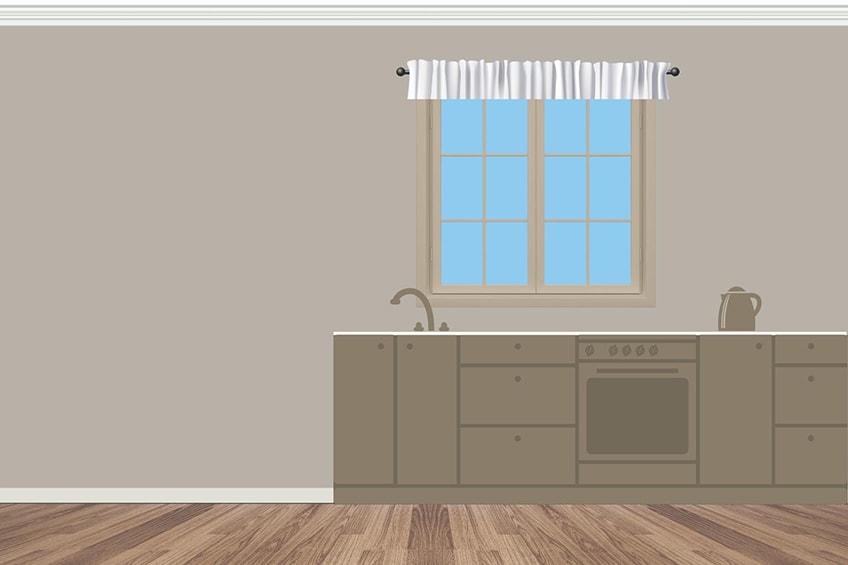
Custom Curtain Lengths
Custom curtains will always be the best and preferred option by most designers, as they fit the height of the room perfectly. Custom curtains don’t have to be made entirely from scratch. A budget-friendly option to customize curtains is to take standard-length store-bought curtains and alter the length to your exact measurements. Appointing a curtain designer and fabricator from the start is always the best option, because:
- In most cases, the designer will do a site visit to measure for the curtains themselves. It’s much better to have a professional with experience do the measuring than you taking the risk of measuring incorrectly and potentially causing expensive mistakes.
- When physically on-site, curtain fabricators can give you the best advice in terms of what type of fabric and style curtains will suit the needs of the space best.
How to Measure for Curtains
The length of your curtains depends greatly on the needs and style of the space. Before measuring anything, ask yourself the following questions:
- What will the main use of the space be? Relaxation or work? Will food be prepared in the space? Will kids and pets regularly make use of the space?
- How often will these curtains have to be opened or closed?
- What level of privacy is needed for the room?
- What is the overall style of the space/room? Is it formal or casual? Do I want it to look effortless and flowy or perfect and minimal?
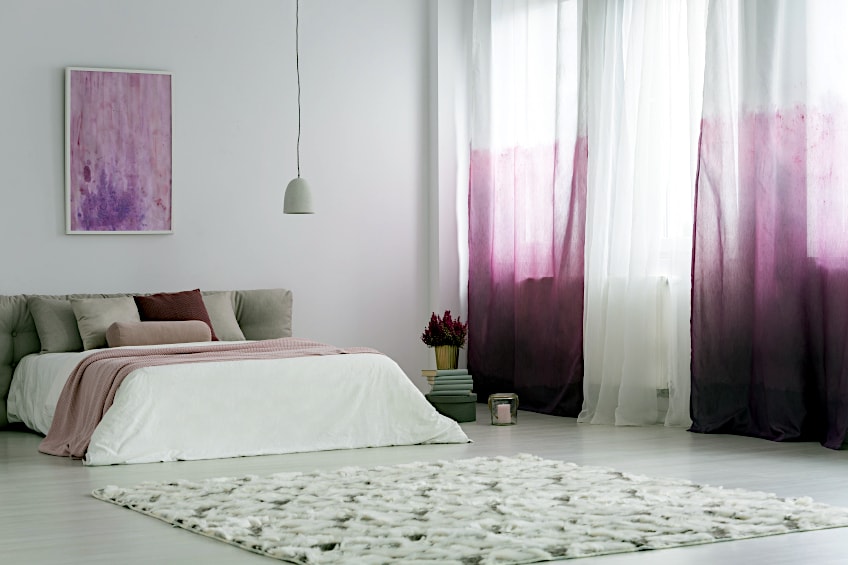
When the above questions have been answered and you have decided what type of curtains you want for each space, you can start measuring. But first: If you are moving into a house with no curtain rods installed yet, it is important to first determine where your rods will be. Ideally, the rods should already be in place before measuring for curtains. From a design point of view, it is best to install the rods as high/close to the ceiling as possible, regardless of the height of your windows. The rod should be four inches above the lintel of the window at the very least to ensure sufficient coverage. If you have cornices installed, place the rod at least two to three inches underneath the cornices. Installing curtains as high as possible will create the illusion of higher ceilings and open the space tremendously.

When determining the width of the curtain, take measurements from the floor to the rod placement on both sides of the window. Never only measure one side of the window and assume that the height is the same through to the other side. There is a chance that the ceiling or floor is slightly uneven, and the curtain length can be adjusted to visually correct the skewness of the space. This, of course, is not always possible when looking at standard curtain lengths, but should still be taken into consideration as standard store-bought curtains can always be altered.
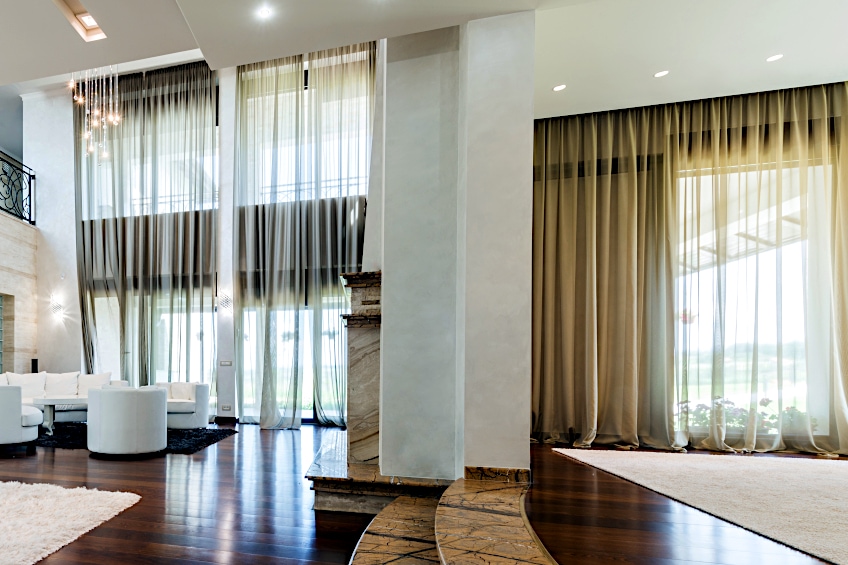
Tip: When measuring for the width of the curtains/rod placement, position it as far toward the sides of the windows as possible. The general rule is to have your curtains hanging at least ten inches wider than the window on each side, but nothing stops you from making them even wider and further away from the windows. This will also open the space, and when you draw the curtains, they won’t sit directly in front of the window and block any natural light during the day. The aim is to let in the most amount of natural light during the day.
Mistakes to Avoid
- Measure for full-length curtains, regardless of whether the curtains will be behind furniture pieces, where you will probably not see the trim. The weight and fullness of the curtains are visually compromised when the incorrect length is chosen, even if you can’t see the entire curtain.
- Make sure your curtains are long enough, as curtains that are an awkward length will make the space look incomplete. As a rule, avoid curtains that are shorter than 96 inches, unless your ceilings are unusually low.
Choosing the correct curtain length for your windows is essential. The right curtain length can make a space feel larger and more put together or can be used to hide awkwardly placed windows. If hiring a professional is out of your budget, rather take the time and assess the needs of the space, decide which style of curtains will work best, and take your time when measuring, as this will pay off in the long run.
Frequently Asked Questions
Should Curtains Be Longer Than the Window?
Privacy aside, another role for covering windows with curtains is for insulation purposes. For this reason, it is very important that the curtains are longer and wider than the window. This also varies depending on the use of the space. Tier-length curtains are more decorative and only cover the bottom half of the window, so this rule doesn’t apply here.
What Lengths Are Kitchen Curtains?
Sill-length, apron-length, and tier-length curtains are all curtains that can be used in a kitchen above a countertop. For sill-length curtains, measure from the top of the windowsill to the curtain rod and add a few extra inches for seams. Apron-length curtains stop an inch below the windowsill. Tier-length curtains are great for letting in natural light and are available in 24 inches, 36 inches, and 46 inches.
What Is the Standard Curtain Rod Height?
As a rule, the rod should be placed at a minimum of four inches above the lintel of the window. Note that this is the bare minimum, and if you have the space between the lintel and the ceiling to place the rod even higher, it is best to place the rod as high as possible.
Are Curtains Supposed to Touch the Floor?
It all depends on the desired mood of the space. Floor-length or kiss-length curtains that graze the floor look great and well-finished, but can be very difficult to achieve as the measurements have to be spot on. In retrospect, the answer is no, curtains don’t have to touch the floor.
Which Curtain Length Looks Best?
This might not be what you want to hear, but a custom curtain length always looks best. Yes, there are standard curtain lengths readily available, but these will rarely fit a space perfectly. Curtains that were custom-fabricated to fit the exact height of the curtain rod will make a room feel much more complete than a standard store-bought curtain that sits at an awkward length of a few inches too short.
What Length Curtains Make a Room Look Bigger?
Curtains that start at the floor and go up past the lintel height all the way to the ceiling will draw the eye upward and create the illusion of very high ceilings. This is a great hack for rooms with very low ceilings or awkwardly placed windows.







